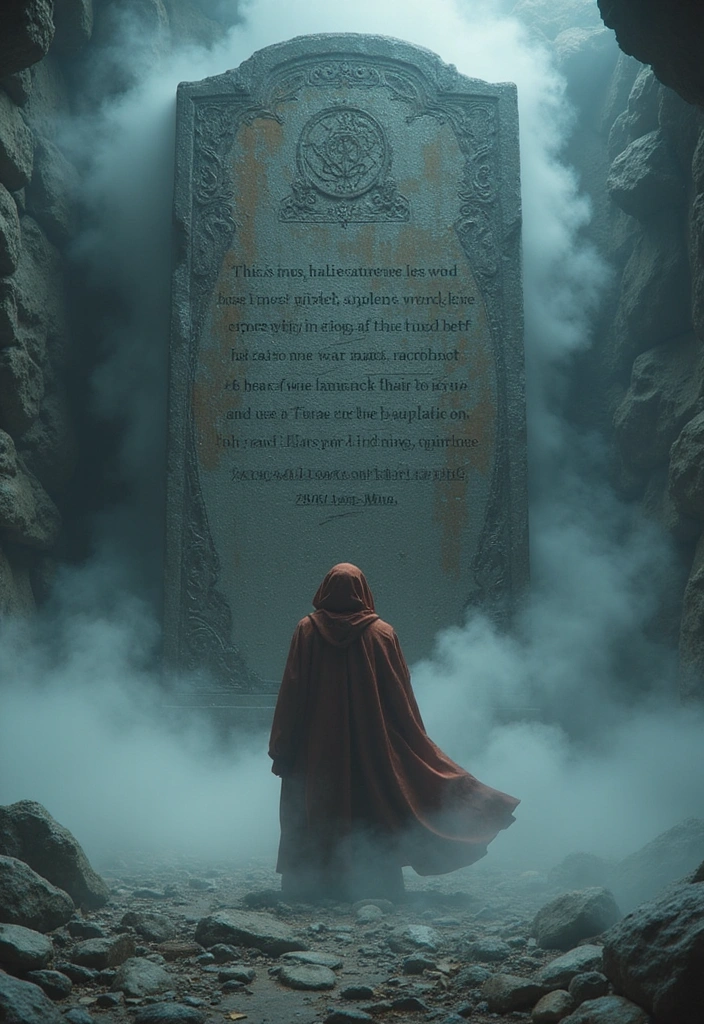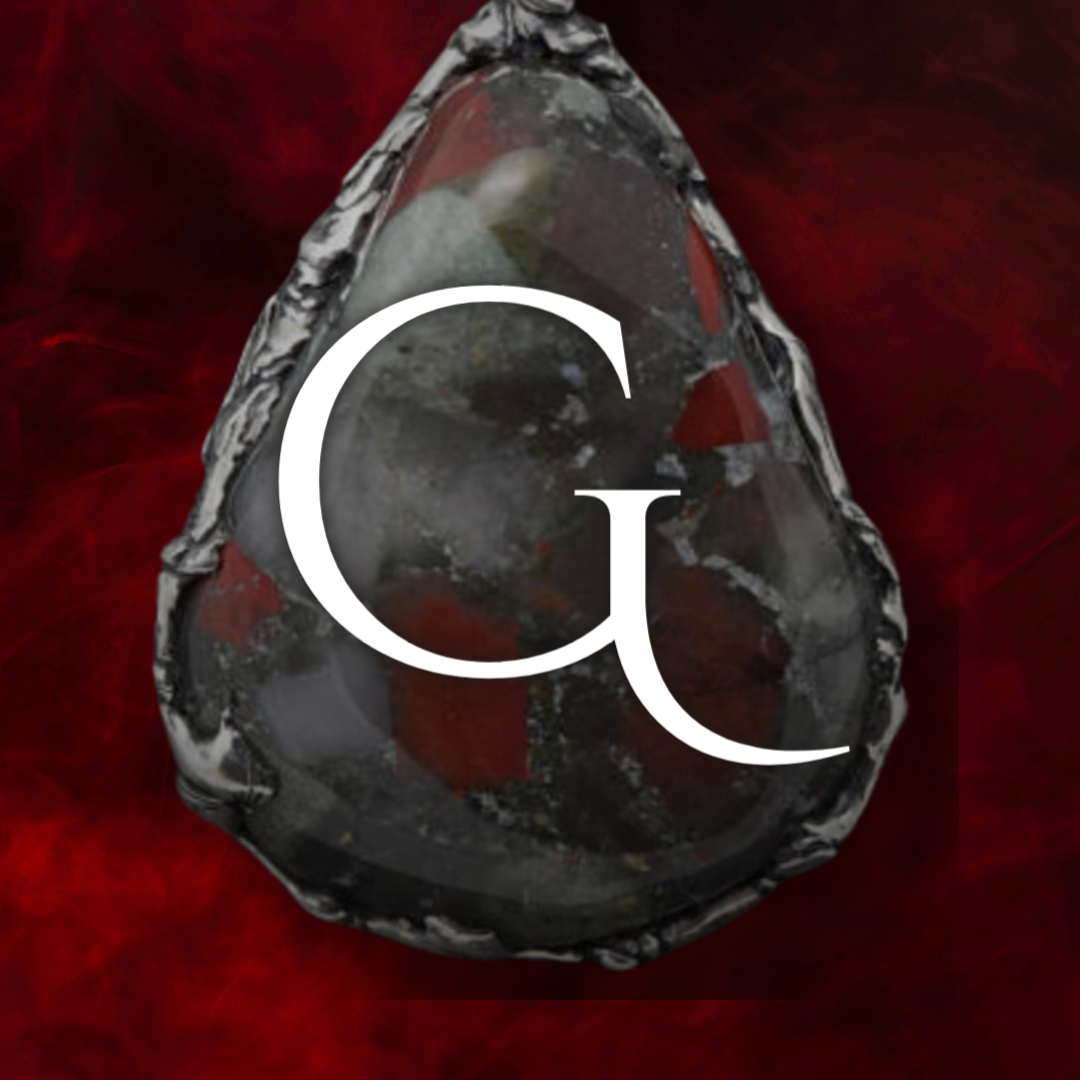

Welcome to a realm of imagination where your fantasy stories can truly come alive!
In this article, we will unveil 12 captivating theme prompts designed to spark your creativity and deepen the emotional resonance of your writing.
Whether you’re a seasoned author or just starting, these themes will help you construct a narrative that tantalizes the senses and tugs at the heartstrings.
Get ready to transform your fantasy writing into an unforgettable journey that resonates with your readers!
1. The Hero’s Journey: Transformation and Growth

At the core of every captivating fantasy narrative is the Hero’s Journey, a timeless theme that encapsulates the essence of transformation and growth.
This theme encourages writers to delve into the myriad challenges their characters encounter in pursuit of their aspirations, ultimately leading to significant personal development.
Imagine a young sorcerer who uncovers their magical powers, navigating through self-doubt and confronting formidable adversaries in their quest to save a kingdom. This journey not only entertains but also reflects the real-life journeys we all experience, making it relatable and impactful.
To effectively weave this theme into your story, consider utilizing a comprehensive Hero’s Journey Guidebook that outlines the stages of this transformative journey.
Additionally, a Character Development Workbook can help you craft a clear arc of change for your protagonist, ensuring their growth is both profound and believable.
Don’t forget to introduce mentors and companions who assist in this growth while showcasing internal struggles alongside external conflicts.
Finally, employing Fantasy Novel Writing Software can streamline your writing process, allowing you to focus on highlighting the valuable lessons learned through trials and tribulations.
By embedding these elements, you’ll create a rich tapestry of growth that resonates deeply with your audience.
Product Recommendations:
• Hero’s Journey Guidebook
• Character Development Workbook
• Fantasy Novel Writing Software
2. The Power of Friendship: Bonds that Matter

Friendship is an immensely powerful theme that can infuse your fantasy narrative with depth and warmth.
In a realm teeming with dragons, magic, and epic quests, the bonds between characters can become the heartbeat of the story. Picture a diverse group of heroes—a cunning rogue, a wise healer, and a brave warrior—who must navigate their differences and learn to trust one another.
As their friendships are put to the test through various trials and tribulations, they reveal loyalty, sacrifice, and the incredible strength that comes from unity.
To effectively portray friendship in your writing, consider incorporating elements like backstories that explain why these characters have come together, and moments of vulnerability that fortify their bond. Utilize dialogue to unveil their unique personalities and dynamics, and illustrate conflicts that ultimately draw them closer together.
For inspiration, you might explore a Friendship Quotes Book that highlights the beauty of companionship, or use a Character Bonding Journal to delve deeper into your characters’ relationships. Additionally, engaging in a Fantasy Adventure Board Game can provide a fun way to explore the dynamics of teamwork and friendship in a fantastical setting.
This theme not only entertains but also inspires readers to treasure their own friendships in the real world.
Product Recommendations:
• Friendship Quotes Book
• Character Bonding Journal
• Fantasy Adventure Board Game
3. The Struggle for Power: Ambition and Corruption

Power dynamics are often central to fantasy narratives, shedding light on the more sinister aspects of ambition and control.
This theme provides a rich canvas for writers to delve into how the relentless pursuit of power can corrupt even the most virtuous individuals.
Picture a once-beloved ruler who, in their quest for supremacy, transforms into a tyrant.
By illustrating the intricacies of moral dilemmas, you can encourage readers to ponder the ramifications of unbridled ambition.
To effectively convey this theme, consider utilizing resources like the Power Dynamics in Fiction Book to deepen your understanding of character motivations and power struggles.
Additionally, the Fantasy Worldbuilding Toolkit can help you craft a setting that reflects the societal impacts of these conflicts.
Finally, for building compelling antagonists, refer to the Antagonist Development Guide, which can aid in creating relatable motivations that enhance your narrative.
Through this theme, your story can resonate with real-world issues, prompting readers to reflect on the true nature of power and its consequences.
Product Recommendations:
• Power Dynamics in Fiction Book
• Fantasy Worldbuilding Toolkit
• Antagonist Development Guide
4. Nature’s Fury: The Environment as a Character

Nature can be an incredibly dynamic character within your fantasy narrative, shaping both the plot and the journeys of your characters. By exploring this theme, writers can delve into the intricate relationship between humanity and the natural world, highlighting its fragility and power.
Imagine a kingdom grappling with the fury of an ancient forest that has awakened in response to environmental degradation. This scenario can lead to thrilling conflicts and poignant moments that inspire readers to reflect on the importance of environmental stewardship. To enhance your storytelling, consider utilizing a Nature Writing Guide to help you personify elements of nature, fostering both conflict and alliance within your narrative.
Incorporate vivid descriptions that evoke strong emotions tied to the environment, and consider highlighting real-world environmental issues through your plot. Showcase the characters’ relationships with nature, whether they demonstrate respect or embody destruction. You might find inspiration in Environmental Themed Fantasy Books that offer unique perspectives on this theme.
Additionally, engage your audience further with an Eco-Adventure Board Game that encourages players to think about the environment while enjoying a fun, interactive experience. This theme can ultimately inspire readers to cherish and protect the world around them.
Product Recommendations:
• Nature Writing Guide
• Environmental Themed Fantasy Books
• Eco-Adventure Board Game
5. The Quest for Identity: Who Am I?

Identity is a profound theme that resonates deeply within fantasy narratives. Characters often embark on quests not just for treasure but to uncover their true selves.
Consider a shapeshifter who grapples with their identity, caught between societal expectations and personal desires. This theme invites readers to reflect on their own identities, making the journey both relatable and impactful.
To effectively explore identity in your writing, consider using an Identity Exploration Journal that encourages deep self-reflection and can help you shape your characters’ journeys.
Additionally, a Fantasy Character Building Kit can aid in developing multifaceted characters who grapple with societal expectations versus personal desires.
Incorporating memory flashbacks can reveal a character’s past struggles, while allies can support them in their journey of self-discovery. Don’t forget to allow your characters to evolve as they find their true identities.
By addressing identity in your narrative, you can create a strong emotional connection with readers, making their own journeys resonate even more. For additional inspiration, a Creative Writing Prompts Book can provide you with fresh ideas to explore this vital theme.
Product Recommendations:
• Identity Exploration Journal
• Fantasy Character Building Kit
• Creative Writing Prompts Book
6. Love and Sacrifice: The Ultimate Choice

Love is an enduring theme that has the power to elevate your fantasy narrative to profound emotional heights.
Whether it manifests as romantic affection or the deep bonds of family and friendship, the theme of sacrifice for love can create unforgettable moments in your story.
Picture a courageous knight faced with a heart-wrenching decision: to save their beloved or to protect the entire kingdom. This poignant choice invites readers to reflect on the lengths they would go to for those they hold dear.
To skillfully weave love and sacrifice into your narrative, consider incorporating elements that resonate deeply with readers. For instance, developing heartfelt relationships can draw your audience in, while showcasing the internal conflicts characters endure when faced with difficult choices can enhance the dramatic tension.
Dramatic moments can serve to highlight the intensity of love, allowing readers to feel the stakes involved. Furthermore, allowing characters to evolve through their experiences of love and sacrifice can create a powerful arc that inspires and connects on a profound level.
To further explore these themes, check out romantic fantasy novels that delve into the complexities of love, or consider using an emotional writing workbook to enhance your storytelling skills.
Product Recommendations:
• romantic fantasy novels
• emotional writing workbook
• fantasy writing guide
7. The Conflict Between Good and Evil: Moral Ambiguity

Good versus evil is a timeless theme in fantasy, yet delving into the intricacies of moral ambiguity can significantly enrich your narrative. Instead of relying on straightforward heroes and villains, consider crafting characters who grapple with their ethical dilemmas and conflicting motivations.
For instance, envision a dark sorceress who genuinely believes her actions serve a greater purpose, thereby challenging the fundamental definitions of right and wrong. This approach not only deepens your characters but also invites readers to reflect on their own perceptions of morality.
To effectively explore moral ambiguity in your writing, you might find the Moral Dilemmas in Fiction Book particularly useful. It offers insights into the complexities of ethical quandaries that can enrich your storytelling. Additionally, the Writing Complex Characters Guide can help you develop multi-dimensional characters with intricate motivations, ensuring their choices feel authentic and impactful.
Consider illustrating the consequences of their decisions, regardless of their intentions, and incorporating gray areas where they must face difficult choices. Finally, allow your characters to evolve as they confront their own morals, which can lead to profound narrative transformations. To aid in this exploration, the Fantasy Conflict Workbook could provide you with valuable tools to structure these conflicts effectively. By engaging with moral ambiguity, your narrative can spark meaningful conversations about the nature of good and evil.
Product Recommendations:
• Moral Dilemmas in Fiction Book
• Writing Complex Characters Guide
• Fantasy Conflict Workbook
8. The Clash of Cultures: Diversity and Understanding

Incorporating diverse cultures into your fantasy narrative can significantly enrich your world-building, offering readers a more immersive experience. This theme opens up opportunities to explore both the beauty and challenges that arise from cultural differences.
Imagine a young hero tasked with uniting two warring kingdoms, each boasting its own unique traditions and beliefs. Through this journey, you can emphasize the importance of understanding and acceptance among different cultures.
To effectively portray cultural clashes in your story, consider these valuable tips:
– Delve into research on various cultures to create authentic representations, perhaps starting with a resource like the Cultural Representation in Fiction Book.
– Illustrate characters learning from one another’s customs and beliefs, showcasing their growth through shared experiences.
– Utilize conflict to reveal misunderstandings, illustrating how characters evolve through their interactions.
– Celebrate the beauty of diversity, highlighting moments of connection that bridge cultural divides.
By embracing this theme, your narrative not only captivates but also fosters empathy and connection among readers. For an enhanced writing process, consider using a World-Building Guide to help you craft a rich, vibrant world that reflects the complexities of cultural interactions.
Product Recommendations:
• Cultural Representation in Fiction Book
• World-Building Guide
• Fantasy Writing Prompts Workbook
9. The Journey Through Time: Past, Present, and Future

Time travel is an enthralling theme that opens up a world of possibilities for exploring historical events and their ramifications on both the present and the future. By weaving time travel into your fantasy narrative, you can embark on exciting adventures that lead to significant revelations about fate and choice.
Imagine a protagonist who journeys back in time to avert a disaster, only to confront unforeseen consequences in their own timeline. This concept encourages readers to reflect on how the past influences our current decisions and future paths.
To effectively incorporate time travel into your story, consider these strategies: establish clear rules for how time travel operates in your universe, utilize flashbacks to unveil pivotal historical events that shape the narrative, and introduce characters who grapple with the outcomes of their time-altering actions. You might also delve into themes of memory and legacy, enriching your story’s depth.
For those seeking inspiration or guidance, check out the Time Travel Fantasy Books that can ignite your imagination. Additionally, a comprehensive Writing Time Travel Stories Guide can provide valuable insights into crafting your narrative. Lastly, consider using Creative Writing Prompt Cards to spark your creativity and help you brainstorm unique time travel scenarios. By integrating these resources, your narrative can evolve into a captivating exploration of time and its intricate connections.
Product Recommendations:
• Time Travel Fantasy Books
• Writing Time Travel Stories Guide
• Creative Writing Prompt Cards
10. Redemption: The Path to Forgiveness

Redemption stands as a profound theme that allows characters the opportunity to seek forgiveness and undergo transformation. This theme strikes a chord with readers, as we all navigate our missteps and yearn for another chance at grace.
Picture a once-noble hero who must confront a tarnished past to restore their honor and protect their loved ones. Throughout this compelling journey, you can delve into the intricacies of human nature and the potential for change.
To effectively depict redemption in your narrative, consider incorporating several key elements:
– Craft a backstory that sheds light on the character’s fall from grace, perhaps drawing inspiration from works like the Redemption Stories Anthology.
– Illustrate the challenges and setbacks faced on the path to redemption, using resources like the Character Arc Development Guide to shape their growth.
– Incorporate supporting characters who either hinder or facilitate the protagonist’s journey, offering additional layers to their quest for forgiveness.
– Emphasize moments of self-reflection and emotional turmoil, possibly utilizing an Emotional Healing Workbook to deepen the character’s introspection.
By highlighting the theme of redemption, your narrative can resonate with themes of hope and resilience, inspiring both your characters and your readers alike.
Product Recommendations:
• Redemption Stories Anthology
• Character Arc Development Guide
• Emotional Healing Workbook
11. The Influence of Fate: Destiny vs. Free Will

The theme of fate versus free will is a compelling element that challenges your characters’ choices and beliefs throughout your fantasy narrative.
In a richly crafted fantasy world, this theme can provoke dramatic conflicts and invoke deep philosophical questions, encouraging readers to ponder the balance between destiny and personal agency.
Consider a character who receives a prophecy but grapples with the weight of their foretold future, ultimately embarking on a journey to discover their true path.
To effectively explore this theme, you might find valuable resources such as the Fate and Free Will in Fiction book, which delves into the intricacies of these concepts in storytelling.
Additionally, utilizing a Writing Prophecies Guide can help you craft nuanced prophecies or omens that steer your characters’ actions.
Moreover, incorporating a Fantasy Plot Development Workbook can assist in showcasing pivotal moments where characters actively choose their paths, defying expectations and highlighting the consequences of their decisions in the face of fate.
By weaving this theme into your narrative, you can inspire thoughtful discussions about purpose and agency, enriching the reader’s experience.
Product Recommendations:
• Fate and Free Will in Fiction
• Writing Prophecies Guide
• Fantasy Plot Development Workbook
12. The Cycle of Life: Birth, Death, and Rebirth

The cycle of life is a deeply resonant theme that mirrors the natural rhythms of existence, making it a powerful element to weave into your fantasy narrative. By exploring this theme, you can evoke profound emotions and prompt reflections on mortality and the essence of living.
Consider a character who must face their own mortality, embarking on a transformative journey of rebirth. This theme not only allows readers to appreciate the beauty and sadness inherent in life’s cycles but also offers opportunities to delve into the intricacies of existence.
To effectively illustrate the cycle of life, you might want to incorporate imagery of nature, symbolizing the perpetual cycles of birth, death, and rebirth. Resources such as the Life Cycles in Nature Book can provide inspiration for vivid descriptions and rich symbolism.
Additionally, developing characters who experience significant loss and growth throughout the story will enrich your narrative. For guidance on crafting these emotional journeys, the Writing Emotional Journeys Guide can be an invaluable tool.
Incorporate moments of introspection where characters contemplate their existence, highlighting the interconnectedness of all living things. You might also consider integrating poetic elements that capture these themes beautifully; a Fantasy Poetry Anthology can serve as an excellent resource for inspiration.
By embracing the cycle of life in your narrative, you can offer readers profound insights into life and the human experience.
Product Recommendations:
• Life Cycles in Nature Book
• Writing Emotional Journeys Guide
• Fantasy Poetry Anthology
Conclusion: Unleash Your Creativity with These Themes!

These 12 thought-provoking theme prompts are designed to ignite your imagination and elevate your fantasy narratives.
By exploring these themes, you can create stories that resonate with readers on multiple levels, encouraging them to think deeply and feel profoundly.
So, grab your pen and paper, and let your creativity soar as you weave these themes into your next fantasy masterpiece!
Note: We aim to provide accurate product links, but some may occasionally expire or become unavailable. If this happens, please search directly on Amazon for the product or a suitable alternative.
This post contains Amazon affiliate links, meaning I may earn a small commission if you purchase through my links, at no extra cost to you.





